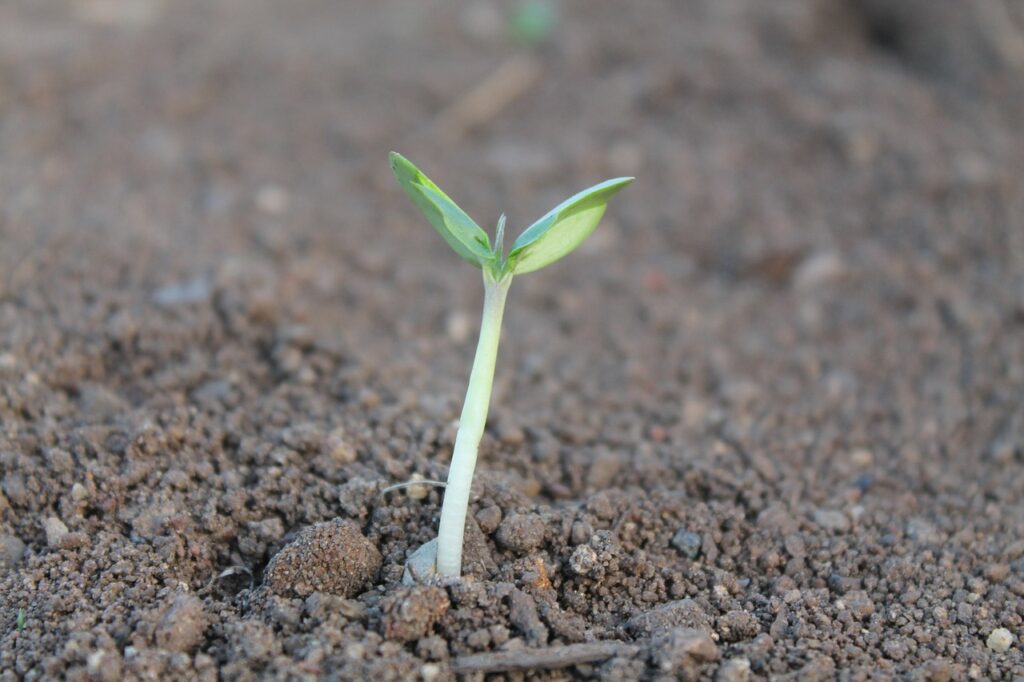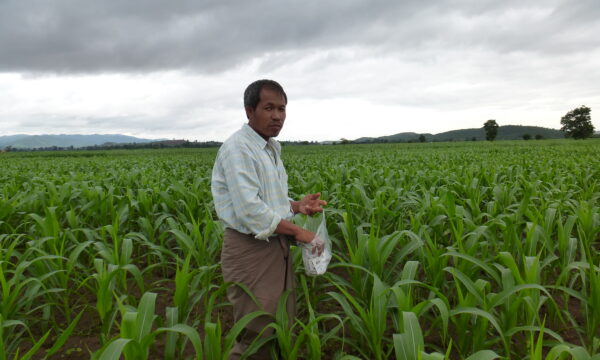Previously, we have discussed the importance of soil health for agriculture, highlighting its threats and outlining protection strategies. In this blog, we dig deeper into the role of soil health in sustainable agriculture and explore its long-term benefits.
With almost half the world’s surface used for agriculture, it is vital that the land on which crops are grown is sustainable for future generations.
Soil as the foundation of sustainable agriculture
Healthy soil has rich biodiversity, including different organisms such as bacteria and fungi, as well as animals like insects and worms. It enables consistent crop productivity without over-reliance on external inputs. This is because soils rich in organic matter, and microorganisms which break down organic materials, make nutrients available to plants. These processes reduce the need for synthetic fertilisers as nutrients are available within the soil.

Chemical fertilisers may damage soil due to lack of lack of organic matter thereby reduce microbial life, essential for nutrient cycling and soil structure, ultimately decreasing biodiversity from unsuitable environment.
Poor soil health and lower levels of organic matter, often results in poor structure which reduce the soil ability to absorb and retain water. This leads to more surface run-off during heavy rain, increasing the risk of flooding. Similarly, this also makes crops more susceptible to drought stress. Poor soil structure means roots cannot reach deep into moisture reserves and become reliable on surface moisture. As this evaporates quickly during droughts, plants risk dehydration. This phenomenon is further exacerbated by impacts of climate change being high temperatures that increase rate or organic decomposition, erratic rainfall and other extreme weather that cause soil degradation impacting its resilience.
Environmental sustainability of healthy soil
Healthy soil can reduce runoff as its structure allows for the infiltration and improves water holding capacity. This also slows down erosion, as surface runoff is a key driver of erosion. It also helps to prevent topsoil and nutrients from washing away, preserving soil fertility. Further, healthy soils act as a filter and helps cut down the amount of waterway pollution.
On top of this, healthy soils mean farmers can rely less on chemical pesticides. By supporting an active and diverse soil ecosystem that hosts beneficial organisms, the soil itself contains organisms that naturally manage diseases and pests.
Critically, healthy soils can act as carbon sinks by capturing and storing carbon dioxide in the atmosphere. By storing more carbon than they release, healthy soils help mitigate the impact of greenhouse gases on the climate.
Economic sustainability for farmers and communities
Healthier soils reduce the costs incurred by farmers over time. By lowering the amount of inputs needed and reducing losses from erosion, they allow farmers to improve profit margins.
They can support more reliable livelihoods and rural development by increasing yield stability and enhancing food security in communities. Additionally, as healthy land is an asset that can be passed down through families, it helps lay a foundation of productivity for future generations. With the population projected to continually grow until the 2080s, we will need healthy soil to keep feeding more people.
Achieving agricultural sustainability
Soil health is central to achieving long-term agricultural sustainability. Healthier soils reduce the risk of crop failure by ensuring resilience. They also help stabilise and increase production as soil fertility and structure enable consistent growth. Finally, they reduce the reliance on chemical inputs. Altogether, this means that healthy soil can support longer-term food security as well as farmers’ livelihoods.
Resources
To learn more about soil health and discover practical solutions, enrol on CABI Academy’s free Sustainable Soil Management Practices short course which is available in English.
Related News & Blogs
Plant clinics in Malawi: Reducing pest threats to increase crop yields and farmer incomes
Plant clinics in Malawi are empowering smallholder farmers to manage crop pests more effectively. In 2025, scientists published a paper in Plant Environment Interactions reviewing the impact of plant clinics on farmers in Malawi. The clinics have creat…
5 December 2025




